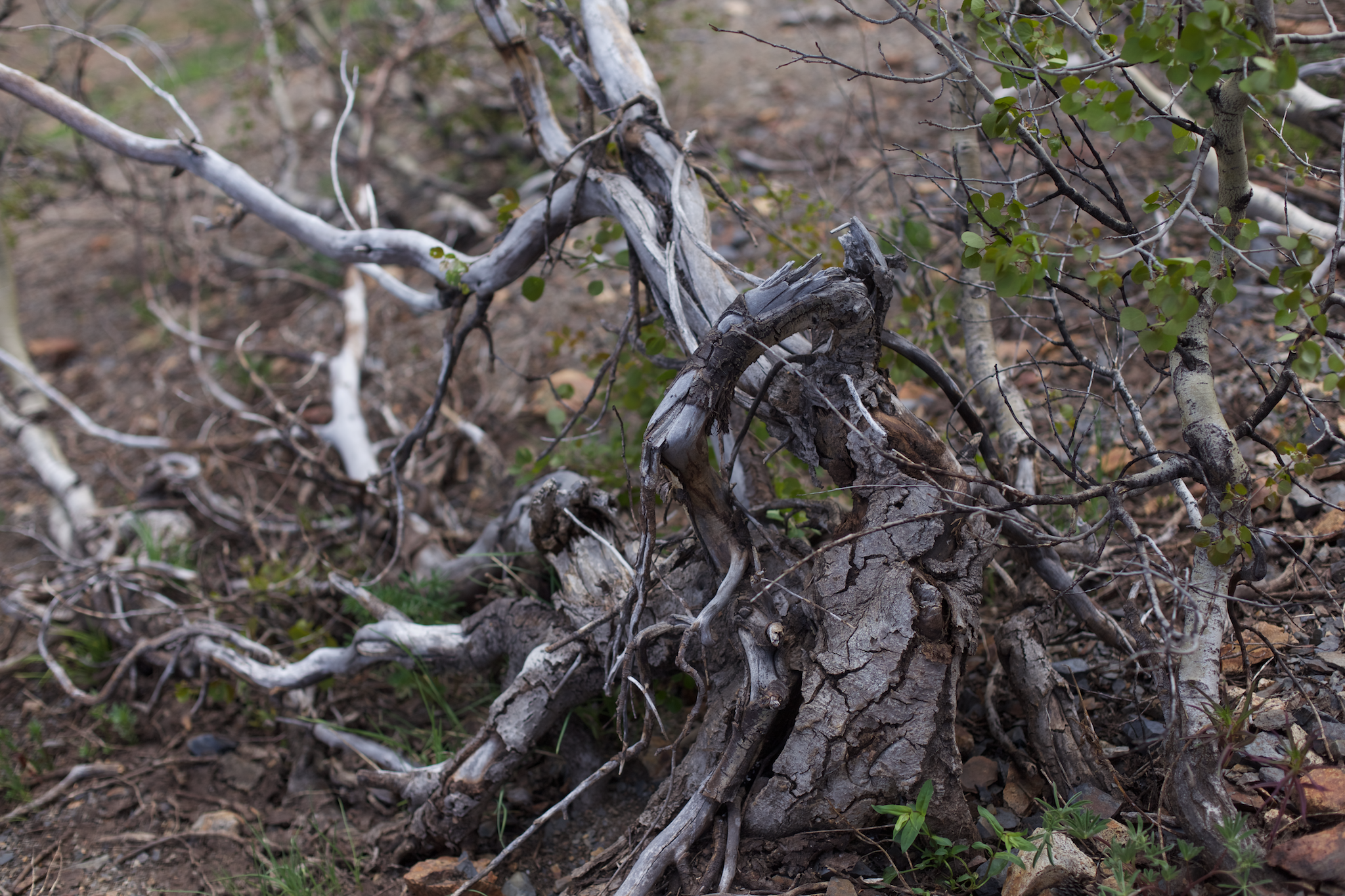We are using this summer in the Rocky Mountains to intensively examine how quaking aspen (Populus tremuloides) performs across different contexts. This response might be mediated by turnover in genotypes, because the species grows in potentially large clones with no genetic variation among stems. This response might also be mediated by variation in microclimate within and across clones. We don’t know how important either of these factors are in these subalpine landscapes. It is possible to find out – with some sweat and effort.
My masters’ student Jolanta (co-supervised by Rick Strimbeck and Bente Graae at the Norwegian University of Science and Technology) has been taking the last two weeks to set up aspen observatories up and down the mountains in this valley – all the way from as low as the river bottoms to as high up as the treeline will go.
At each site, Jolanta and my technician Rozi are tagging trees, which we will later collect DNA samples from to determine their genotypes. This is an easy step, at least in the field – simply collect a leaf, and store it dry until it can get to a laboratory.
The more challenging part in the field is measuring microclimate. Jolanta and Rozi are putting small light and temperature loggers in the canopies of these trees, and they are not easy to get up there. Jolanta has invented a system to do this well.
We first use a large slingshot to place a line over the branch of interest. It usually takes a few shots to get right, because of the uneven terrain, long distances, and mess of branches in the canopy.
Then we pull a second line over the branch, with a datalogger attached.
Finally the line gets tied off to the trunk, and the logger is left in place for the rest of the growing season.
That, at least, is how things work at lower elevations where the trees look normal. Climbing higher, the forest drops out, and the subalpine is replaced by the alpine, with steep scree and snow covering the ground.
Here there are just a few aspens holding on for life, twisted by the wind and snow, growing slowly in the cold. We are measuring them too.
No slingshot is needed for installing loggers on these trees, and the view from the tops of these mountains is beautiful. After two weeks of sweat and work, almost two hundred trees spanning thousands of feet of elevation are now fully instrumented, and it is time to wait and see what happens.












Comments
One response to “Setting up an aspen observatory network”
Picturesque!